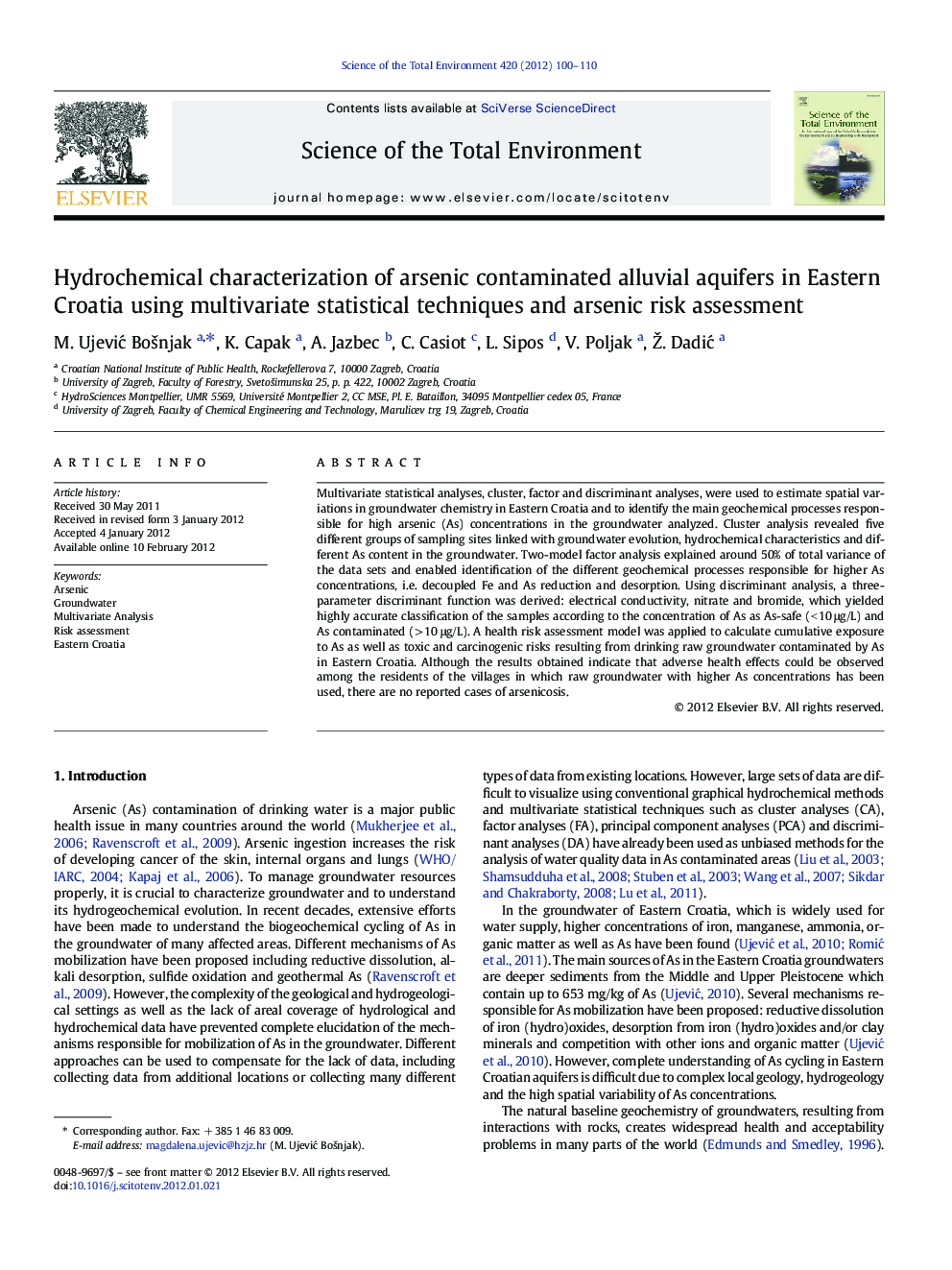| Article ID | Journal | Published Year | Pages | File Type |
|---|---|---|---|---|
| 4429622 | Science of The Total Environment | 2012 | 11 Pages |
Multivariate statistical analyses, cluster, factor and discriminant analyses, were used to estimate spatial variations in groundwater chemistry in Eastern Croatia and to identify the main geochemical processes responsible for high arsenic (As) concentrations in the groundwater analyzed. Cluster analysis revealed five different groups of sampling sites linked with groundwater evolution, hydrochemical characteristics and different As content in the groundwater. Two-model factor analysis explained around 50% of total variance of the data sets and enabled identification of the different geochemical processes responsible for higher As concentrations, i.e. decoupled Fe and As reduction and desorption. Using discriminant analysis, a three-parameter discriminant function was derived: electrical conductivity, nitrate and bromide, which yielded highly accurate classification of the samples according to the concentration of As as As-safe (< 10 μg/L) and As contaminated (> 10 μg/L). A health risk assessment model was applied to calculate cumulative exposure to As as well as toxic and carcinogenic risks resulting from drinking raw groundwater contaminated by As in Eastern Croatia. Although the results obtained indicate that adverse health effects could be observed among the residents of the villages in which raw groundwater with higher As concentrations has been used, there are no reported cases of arsenicosis.
► Wells grouped into clusters related to the hydrogeological settings of the area. ► Factor analysis revealed different processes governing the mobility of arsenic. ► Using discriminant analysis samples classified according to As concentrations. ► Toxic and cancer risk indices warn: adverse health effects could be observed.
